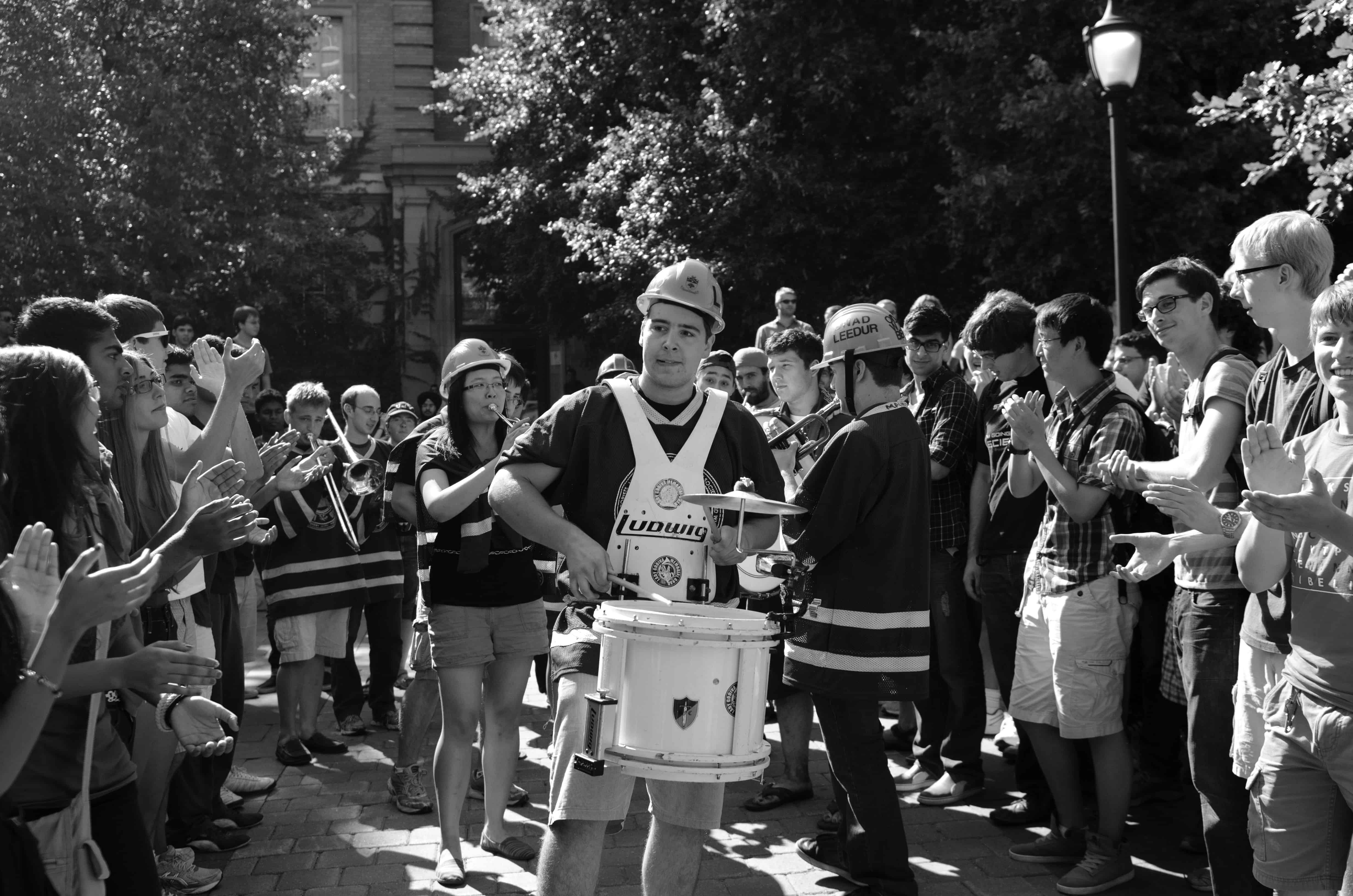One of the most memorable moments of my first year took place in King’s College Circle, where a senior engineering student walked by, dressed all in black with robes and body armour. He had painted his hard hat black and had hired two private security guards to dress up in a similar way and protect him.
This year, at the Varsity Blues football season opener, first-year engineering students were walking around with their hard hats unprotected; no one was trying to steal them. How is it that, in just two years, the traditional rivalry surrounding engineers’ hard hats has virtually disappeared?
This might seem to be a small thing to lose, but it represents a larger trend at U of T: the rivalries between colleges and faculties are quickly disappearing. The change may be explained by continued efforts to unite U of T as a whole. The real tragedy in this is that U of T has the potential to have some of the most active rivalries, and therefore the most vibrant school community, of any university in the country.
U of T’s college and faculty system is unique in Canada, and it allows different communities within the university to develop their own distinct cultures and friendly rivalries with other groups. These days, students seem to identify more with U of T than with their college or faculty. The problem is that this actually detracts from U of T’s school spirit as a whole.
The fact is that our campus is too big and has too many different things going on for the entire student body to easily come together as a single group. However, when we are separated into colleges or faculties, we are surrounded by students whose interests and routines are similar to our own. It is in these smaller niches that school spirit can really develop. As a university with infamously poor school sprirt, maybe it’s time we changed how we look at competition amongst different organizations within the university. Instead of trying to find non-existent common ground, we should celebrate our differences.
When the Senators play the Leafs, the rivalry and animosity between the fans is huge. But when Canada played the United States at the Winter Olympics, the energies of both Leafs and Senators fans were channelled into the incredible support the Canadian team got in Vancouver. U of T needs to take a lesson from this and allow competition and rivalries between the colleges and faculties to continue, so that when U of T goes up against Western or York, we can turn that competitive energy into collective support for U of T.


